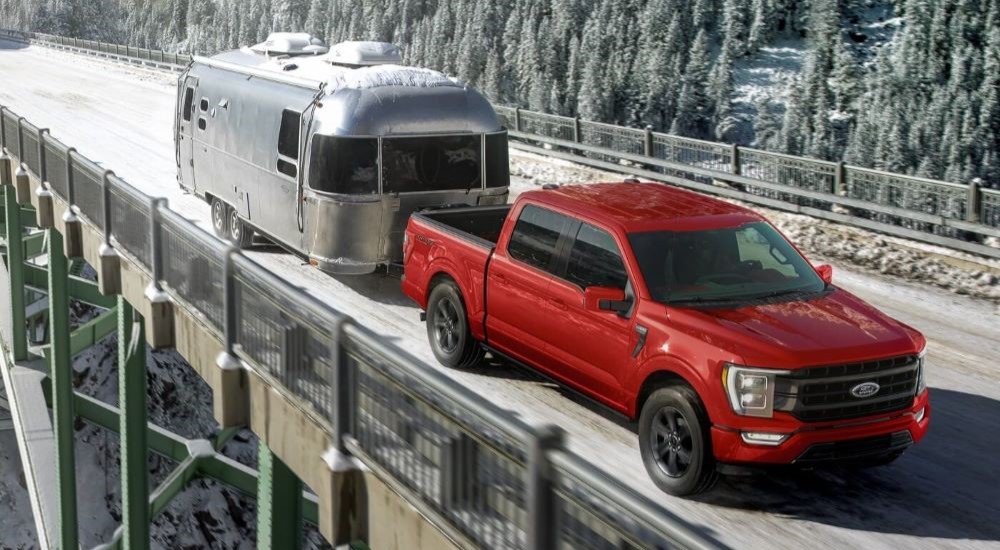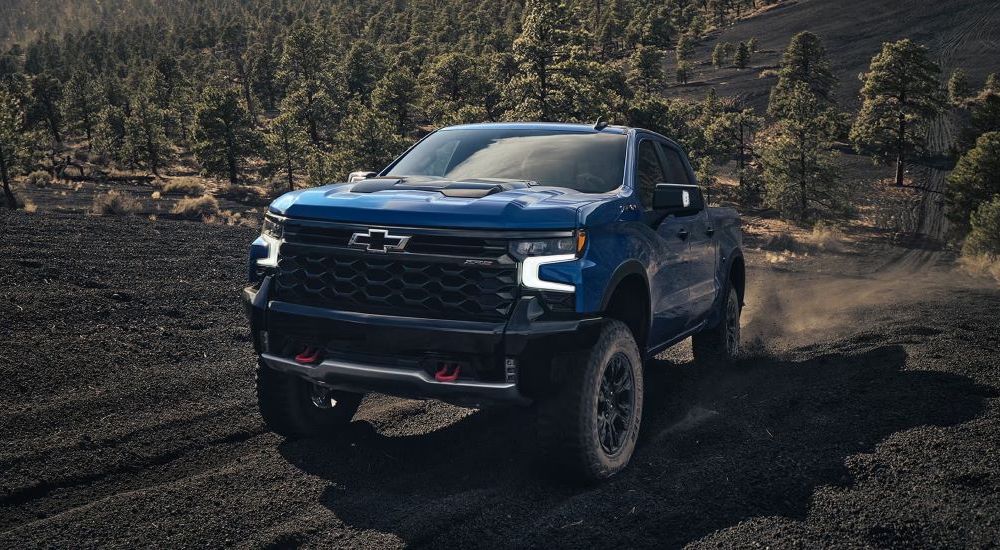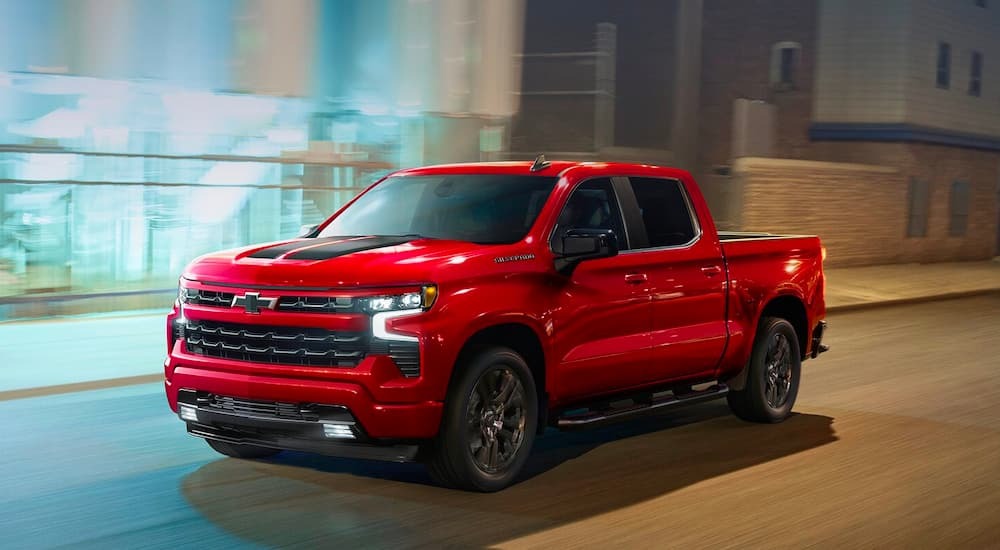Pickup trucks and fuel economy are not usually terms you hear uttered in the same sentence—unless they’re uttered with concern. Historically, if you needed a pickup truck, you just had to accept your fate of spending a lot of money on gas and finding yourself at the pump often. It’s been the bane of the existence of truck drivers and a major concern for government agencies involved in monitoring emissions and regulating gas prices. Frankly, in the national conversation about fuel economy, when trucks have come up, the question has been something like, “What are we going to do about this problem?”
Many manufacturers have been working steadily on offering more fuel-efficient engines in their pickups. If you shop for a Chevy Silverado for sale, you’ll have a choice of several powertrain options, including the new 2.7L TurboMax. Shop for an F-150, and you have the turbocharged 2.7L EcoBoost and 3.5L EcoBoost. Toyota has the 3.4L i-FORCE Max turbocharged V6, and Ram has the upcoming 3.0L Hurricane turbocharged I-6 (are you detecting a theme here?). If it’s got the word “turbo” in it, it’s likely the model’s most fuel-efficient gas powertrain (we specify gas because many trucks also have electric and hybrid powertrains now). But how did we arrive at all these turbos, and are they really changing much? Let’s take a look at the history of fuel economy in pickup trucks.
The Era of V8s
Let’s take a trip back in time, back to the mid-1980s, and check out the major truck players of the era. The Dodge Ram 1500. The Ford F-150. The Chevy C/K 1500. All you see is V8s for days (ok, there were some other engines like V6s, but V8s dominated). As a country, we weren’t quite as concerned with pollution and turbulent oil prices as we are today. As such, we weren’t as concerned with fuel efficiency.
You also have to remember that seeing your regular commuter or busy parent driving a light-duty pickup is more of a recent thing. Originally, primarily farmers and construction workers were interested in pickups. They needed their trucks for serious towing and hauling, and the focus of powertrains at the time was on those capacity figures. As a result, there wasn’t a huge focus on fuel efficiency, and V8s ruled the day. You could smell their emissions and hear their roar. There was nothing quaint or polite about the engine of a pickup truck in the 1980s.
Fast forward to today. Truck fuel efficiency is up by over 100 percent compared to 1975 when it was just 11.6 MPG (can you imagine? You’d live at the gas pump). So, how did we find ourselves today with the new crop of turbocharged engines and fuel efficiency figures in the 20s? Well, put simply, the government got involved.

Bureaucracy Drama Through the Ages
In 1975, Congress started to take fuel economy seriously, following the embargo on oil imports from OAPEC (Organization of Arab Petroleum Exporting Countries). So, it wasn’t really a pollution concern so much as a global economic one. That’s when Congress passed our first Corporate Average Fuel Economy (CAFE) standards. And it was a bit of a shock to vehicle manufacturers everywhere.
Per the first CAFE regulations, passenger vehicles would need to double their fuel efficiency within 10 years. Light-duty trucks got a little relief with less strict regulations, but that doesn’t mean the heat was off them. Regulations were still impactful enough that there were whispers (more like outcries) that truck manufacturers would transition to making tiny sedans, and we’d lose trucks altogether.
Luckily, the truck industry survived, and the regulations led to a fuel economy jump from 11.6 MPG to 19.5 MPG between 1975 and 1985. Now, Congress wasn’t the only player with a say in fuel efficiency standards. The National Highway Traffic Safety Administration (NHTSA) participated in these conversations, too. In the 1980s, they said Congress needed to ease up on regulations for trucks because the expectations were too ambitious. So they did, and fuel economy requirements for pickups froze at around 20 MPG until the early 2000s.
Soon after, the Clinton administration and Congress would battle it out, with the former wanting to get aggressive about truck fuel efficiency standards and the latter telling them to back off a little. Congress won for a while, which led to a boost in truck sales. It seemed that many consumers appreciated that trucks weren’t subjected to as strict of regulations as cars.
Eventually, Congress lifted the freeze on truck fuel economy regulations in 2000, and since then, the government has slowly but steadily raised the requirements for trucks. Today, trucks are required to achieve 31 MPG, and even higher standards are scheduled to take effect by 2025. This can sound highly ambitious. However, considering the rapid development of hybrid and electric pickup trucks, it’s not impossible. But where does that leave us for gas engine trucks and fuel economy? Enter the turbos.
A Look at the Silverado TurboMax
Ford was an early adopter of turbocharged engines, introducing the 3.5L EcoBoost all the way back in 2011. But in 2019, Chevy opened the floodgates when it debuted what would become the 2.7L TurboMax, a high-output four-cylinder engine. This would be followed by Toyota releasing a turbocharged V6 engine for the 2022 Tundra and Ram following suit with the turbocharged 2025 Ram 1500. So what’s all the fuss about?
The reason the TurboMax and similar engines are exciting is that they deliver horsepower and torque figures similar to some V8s but without the poor fuel economy. In fact, the TurboMax is the standard engine on most Silverado 1500 trucks now. Similarly, Ford has just made its 2.7L EcoBoost standard on the 2024 F-150.
The Chevy TurboMax has 310 hp, while the available 5.3L V8 has 355 hp. Yes, the TurboMax gets a slight drop in power, but it’s still a solid engine. Assistant chief engineer at Chevy, Kevin Luchansky, was quoted saying that the low-end torque and good fuel economy of TurboMax were made to “Win over both diesel and V8 customers alike.” It delivers solid fuel economy and power without a premium price tag. That’s what makes it exciting.
The Future of Fuel Economy for Pickup Trucks
For now, it looks like truck manufacturers are in an interesting position. On the one hand, they’re enthusiastically putting out electric variants of their most popular pickups. The Chevy Silverado 1500, Ram 1500, and Ford F-150 all have current or upcoming electric options. One might expect a de-emphasis on gas engines with all these new EVs. But then you have Chevy making this big to-do about renaming the TurboMax in 2024 and Ram introducing the brand-new Hurricane engines for 2025.
The truth is that manufacturers know their client base has a good mix of people who are not ready to leave gas engines in the past, as well as those eagerly awaiting more electric options. It will be interesting to see which group will influence these major automakers’ powertrain decisions moving forward. For now, if you are in the market for a light-duty pickup, you can find plenty of new turbocharged gas engines, but you can also find hybrid and EV variants of most top pickups. We’ll leave it to Congress and the EPA to battle out the future of truck fuel economy.





